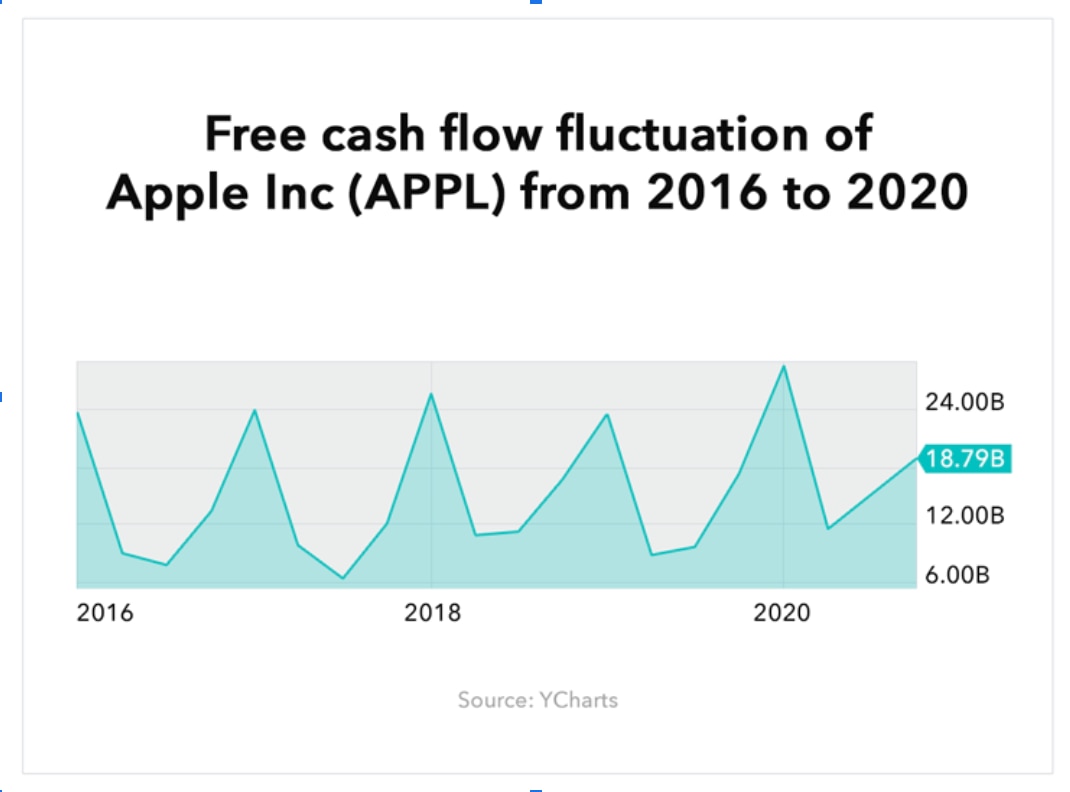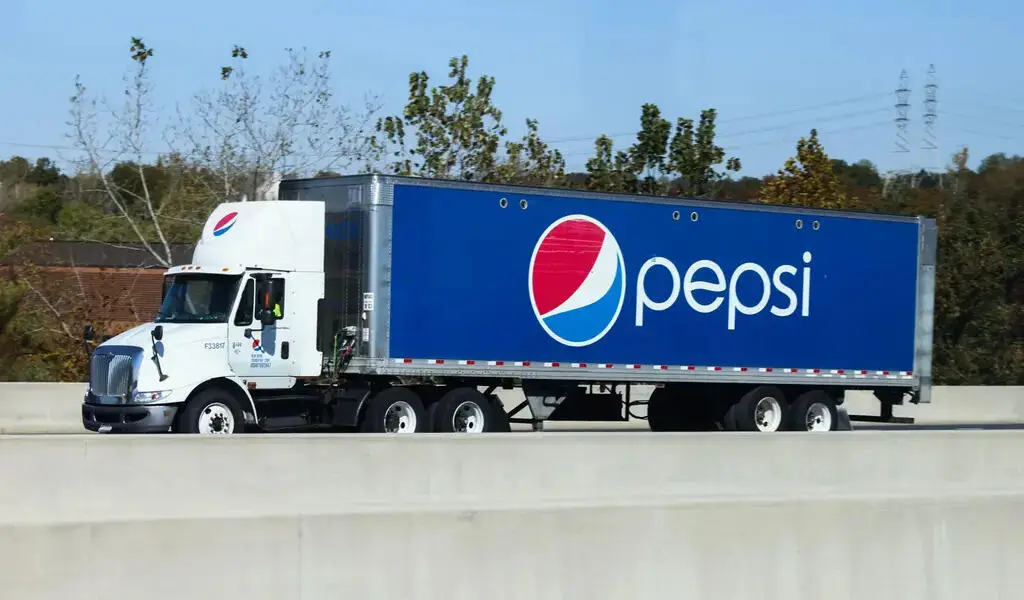Business
What Is Free Cash Flow And How To Calculate Free Cash Flow?

What is Free Cash Flow? – As a business owner or investor, you need to be aware of the financial health of the company you are running or investing in.
One important financial metric to know is free cash flow (FCF).
This article will define FCF, explain why it is important, and show you how to calculate it.
1. What is Free Cash Flow?
Free cash flow is a financial metric that measures how much cash a company generates from its operations after deducting the capital expenditures required to maintain or expand its asset base.
It indicates a company’s financial health and performance, as it shows how much cash is available to fund growth opportunities, pay dividends, reduce debt, or buy back shares.
2. Why is Free Cash Flow Important?
Free cash flow is important because it represents the amount of cash that a company has available to distribute to its shareholders, invest in new projects, pay off debt, or make acquisitions.
It also an indicator of a company’s financial health and ability to generate cash from its operations.
Investors often use FCF to evaluate the value of a company and its stock.
They may compare a company’s FCF to its market capitalization or use it to calculate valuation multiples like price-to-earnings (P/E) ratio or price-to-free cash flow (P/FCF) ratio.
3. How to Calculate Free Cash Flow
To calculate FCF, you need to subtract the capital expenditures from the company’s operating cash flow. Here’s a breakdown of the steps:
3.1 Operating Cash Flow
Operating cash flow (OCF) is the cash a company generates from its operations, including sales revenue, accounts receivable, accounts payable, and inventory.
It is calculated by subtracting the company’s operating expenses from its revenue. The formula for operating cash flow is:
Operating Cash Flow = Net Income + Depreciation and Amortization - Changes in Working Capital3.2 Capital Expenditures
Capital expenditures (CAPEX) are a company’s investments in long-term assets like property, plant, and equipment (PP&E).
They represent a company’s cash on new investments and upgrades to its existing assets.
To calculate CAPEX, you need to subtract the company’s ending PP&E balance from its beginning PP&E balance and add any depreciation expense. The formula for CAPEX is:
Capital Expenditures = Ending PP&E - Beginning PP&E + Depreciation Expense
3.3 Free Cash Flow Formula
Once you have calculated the OCF and CAPEX, you can use the following formula to calculate FCF:
Free Cash Flow = Operating Cash Flow - Capital Expenditures:max_bytes(150000):strip_icc():format(webp)/FreeCashFlowFormula-2fad976df0a24fa493222e21e3a86648.jpg)
4. Interpretation of Free Cash Flow (continued)
On the other hand, a negative FCF means that a company is spending more cash than it is generating from its operations.
This can be a red flag for investors, as it may indicate that the company is not generating enough cash to fund its operations or growth initiatives.
It’s important to note that FCF can vary significantly from quarter to quarter or year to year, depending on a company’s investment plans or changes in its working capital.
Therefore, looking at FCF trends over several periods is best to better understand a company’s financial health.
In addition to calculating free cash flow on a standalone basis, investors often compare a company’s free cash flow to its earnings or net income.
This is known as the free cash flow yield and can be used to evaluate how efficiently a company is generating cash relative to its earnings.
5. Limitations of Free Cash Flow
While FCF is a useful metric for evaluating a company’s financial health, it has its limitations.
For example, FCF does not take into account the time value of money, which can be significant for long-term investments or projects.
Additionally, accounting choices, such as depreciation schedules or working capital management, can affect FCF.
Therefore, investors should use FCF in conjunction with other financial metrics, such as net income, earnings per share, or return on equity, to get a more complete picture of a company’s financial performance.
6. Free Cash Flow vs. Operating Cash Flow
Operating cash flow (OCF) and free cash flow (FCF) are related but different financial metrics.
OCF represents the cash generated or used by a company’s operations, while FCF represents the cash that is available after accounting for capital expenditures.
While both metrics are important for evaluating a company’s financial health, FCF provides a more complete picture of a company’s cash position, as it considers its investment plans and potential for growth.
7. Free Cash Flow vs. Earnings
Earnings, or net income, is another financial metric that is often used to evaluate a company’s financial performance. While earnings represent a company’s profitability, FCF represents its ability to generate cash from its operations.
A company can have high earnings but low FCF if it is spending a lot of cash on capital expenditures or is not managing its working capital effectively.
Therefore, it’s important to consider both earnings and FCF when evaluating a company’s financial health.
8. Examples of Free Cash Flow Calculation
Let’s look at an example of how to calculate FCF for a fictional company called XYZ Corp.
Assume that XYZ Corp. had the following financial data for the year:
- Net income: $100,000
- Depreciation and amortization: $20,000
- Changes in working capital: -$10,000
- Beginning PP&E balance: $500,000
- Ending PP&E balance: $550,000
Using the formulas and steps outlined above, we can calculate the FCF for XYZ Corp. as follows:
Operating Cash Flow = Net Income + Depreciation and Amortization – Changes in Working Capital
= $100,000 + $20,000 – (-$10,000)
= $130,000
Capital Expenditures = Ending PP&E – Beginning PP&E + Depreciation Expense
= $550,000 – $500,000 + $20,000
= $70,000
Free Cash Flow = Operating Cash Flow – Capital Expenditures
= $130,000 – $70,000
= $60,000
Therefore, XYZ Corp. generated $60,000 in FCF for the year.

9. Free Cash Flow Analysis
- FCF Trends: Look at FCF trends over several periods to see if a company is generating consistent cash flow or if there are significant fluctuations. A consistent or growing FCF trend is generally a positive sign for investors.
- FCF Margin: Calculate FCF as a percentage of revenue to see how much cash a company is generating relative to its sales. A high FCF margin may indicate that a company is operating efficiently and has a strong cash position.
- FCF Yield: Calculate FCF as a percentage of market capitalization to see how much cash a company is generating relative to its market value. A high FCF yield may indicate that a company is undervalued or has strong growth potential.
- FCF to Debt Ratio: Calculate FCF as a percentage of total debt to see how much cash a company is generating relative to its debt load. A high FCF to debt ratio may indicate that a company has the ability to pay off its debt or invest in growth initiatives.
- FCF to Equity Ratio: Calculate FCF as a percentage of total equity to see how much cash a company is generating relative to its shareholders’ equity. A high FCF to equity ratio may indicate that a company has strong cash flow and the ability to pay dividends or invest in growth initiatives.

10. Conclusion
In conclusion, free cash flow is a valuable financial metric for evaluating a company’s financial health and ability to generate cash from its operations.
By calculating and analyzing FCF, investors can make informed investment decisions and better understand a company’s financial position.
While FCF has its limitations, it provides a more complete picture of a company’s cash position than other financial metrics such as net income or earnings per share.
Therefore, investors should consider FCF in conjunction with other financial metrics to get a more complete picture of a company’s financial health.
RELATED CTN NEWS:
How To Find A Job You Love? Steps To Increase Your Chances Of Landing A Fulfilling Career
How To Make Home Depot Credit Card Payment?: 4 Ways To Make Payment
What Is A Target Market? How To Identify And Reach Your Own Target Audience

Business
PepsiCo Reduces Revenue Projections As North American Snacks And Key International Markets Underperform.

(VOR News) – In the third quarter of this year, Pepsi’s net income was $2.93 billion, which is equivalent to $2.13 per share. This was attributed to the company.
This is in stark contrast to net income of $3.09 billion, which is equivalent to $2.24 per share, during the same period in the previous year. The company’s earnings per share were $2.31 when expenses were excluded.
Net sales decreased by 0.6%, totaling $23.32 billion. Organic sales increased by 1.3% during the quarter when the effects of acquisitions, divestitures, and currency changes are excluded.
Pepsi’s beverage sales fell this quarter.
The most recent report indicates that the beverage and food sectors of the organization experienced a 2% decline in volume. Consumers of all income levels are demonstrating a change in their purchasing habits, as indicated by CEOs’ statements from the previous quarter.
Pepsi’s entire volume was adversely affected by the lackluster demand they encountered in North America. An increasing number of Americans are becoming more frugal, reducing the number of snacks they ingest, and reducing the number of times they purchase at convenience stores.
Furthermore, Laguarta observed that the increase in sales was partially attributed to the election that occurred in Mexico during the month of June.
The most significant decrease in volume was experienced by Quaker Foods North America, which was 13%. In December, the company announced its initial recall in response to a potential salmonella infection.
Due to the probability of an illness, the recall was extended in January. Pepsi officially closed a plant that was implicated in the recalls in June, despite the fact that manufacturing had already been halted.
Jamie Caulfield, the Chief Financial Officer of Pepsi and Laguarta, has indicated that the recalls are beginning to have a lessening effect.
Frito-Lay experienced a 1.5% decline in volume in North America. The company has been striving to improve the value it offers to consumers and the accessibility of its snack line, which includes SunChips, Cheetos, and Stacy’s pita chips, in the retail establishments where it is sold.
Despite the fact that the category as a whole has slowed down in comparison to the results of previous years, the level of activity within the division is progressively increasing.
Pepsi executives issued a statement in which they stated that “Salty and savory snacks have underperformed year-to-date after outperforming packaged food categories in previous years.”
Pepsi will spend more on Doritos and Tostitos in the fall and winter before football season.
The company is currently promoting incentive packets for Tostitos and Ruffles, which contain twenty percent more chips than the standard package.
Pepsi is expanding its product line in order to more effectively target individuals who are health-conscious. The business announced its intention to acquire Siete Foods for a total of $1.2 billion approximately one week ago. The restaurant serves Mexican-American cuisine, which is typically modified to meet the dietary needs of a diverse clientele.
The beverage segment of Pepsi in North America experienced a three percent decrease in volume. Despite the fact that the demand for energy drinks, such as Pepsi’s Rockstar, has decreased as a result of consumers visiting convenience stores, the sales of well-known brands such as Gatorade and Pepsi have seen an increase throughout the quarter.
Laguarta expressed his opinion to the analysts during the company’s conference call, asserting, “I am of the opinion that it is a component of the economic cycle that we are currently experiencing, and that it will reverse itself in the future, once consumers feel better.”
Additionally, it has been noted that the food and beverage markets of South Asia, the Middle East, Latin America, and Africa have experienced a decline in sales volume. The company cut its forecast for organic revenue for the entire year on Tuesday due to the business’s second consecutive quarter of lower-than-anticipated sales.
The company’s performance during the quarter was adversely affected by the Quaker Foods North America recalls, the decrease in demand in the United States, and the interruptions that occurred in specific international markets, as per the statements made by Chief Executive Officer Ramon Laguarta.
Pepsi has revised its forecast for organic sales in 2024, shifting from a 4% growth rate to a low single-digit growth rate. The company reiterated its expectation that the core constant currency profitability per share will increase by a minimum of 8% in comparison to the previous year.
The company’s shares declined by less than one percent during premarket trading. The following discrepancies between the company’s report and the projections of Wall Street were identified by LSEG in a survey of analysts:
SOURCE: CNBC
SEE ALSO:
Old National Bank And Infosys Broaden Their Strategic Partnership.
Business
Old National Bank And Infosys Broaden Their Strategic Partnership.

(VOR News) – Old National Bank, a commercial bank with its headquarters in the Midwest, and Infosys, a firm that specializes in information technology, have recently entered into a strategic expansion of their link, which has been in place for the past four years.
This expansion is more likely to take place sooner rather than later, with the likelihood being higher.
For the purpose of making it possible for Old National Bank to make use of the services, solutions, and platforms that are offered by Infosys, the objective of this expansion is to make it possible for the bank to transform its operations and processes through the application of automation and GenAI, as well as to change significant business areas.
This lets the bank leverage Infosys’ services, solutions, and platforms.
Old National Bank Chairman and CEO Jim Ryan said, “At Old National, we are committed to creating exceptional experiences for both our customers and our fellow employees.”
This statement is applicable to Old National Bank. Infosys is carefully managing the business process innovations that it is putting us through, putting a strong emphasis on efficiency and value growth throughout the process to ensure that it is carried out efficiently.
This is a routine occurrence throughout the entire operation. Because of Infosys’ dedication to our development and success, we are incredibly appreciative of the assistance they have provided.
Old National has been receiving assistance from Infosys in the process of updating its digital environment since the year 2020, according to the aforementioned company.
Ever since that time, the company has been providing assistance. The provision of this assistance has been accomplished through the utilization of a model that is not only powerful but also capable of functioning on its own power.
Infosys currently ranks Old National thirty-first out of the top thirty US banks.
This ranking is based on the fact that Old National is the nation’s largest banking corporation.
It is estimated that the total value of the company’s assets is approximately fifty-three billion dollars, while the assets that are currently being managed by the organization are valued at thirty billion dollars.
Dennis Gada, the Executive Vice President and Global Head of Banking and Financial Services, stated that “Old National Bank and Infosys possess a robust cultural and strategic alignment in the development, management, and enhancement of enterprise-scale solutions to transform the bank’s operations and facilitate growth.”
This remark referenced the exceptional cultural and strategic synergy between the two organizations. Dennis Gada is the one who asserted this claim. This was articulated explicitly concerning the exceptional cultural congruence and strategy alignment of the two organizations.
We are pleased to announce that the implementation of Infosys Topaz will substantially expedite the transformation of Old National Bank’s business processes and customer service protocols. We are exceedingly enthusiastic about this matter. We are quite thrilled about this specific component of the scenario.
Medium-sized banks operating regionally will continue to benefit from our substantial expertise in the sector, technology, and operations. This specific market segment of Infosys will persist in benefiting from our extensive experience. This phenomenon will enable this market sector to sustain substantial growth and efficiency benefits.
SOURCE: THBL
SEE ALSO:
American Water, The Largest Water Utility In US, Is Targeted By A Cyberattack
States Sue TikTok, Claiming Its Platform Is Addictive And Harms The Mental Health Of Children
Qantas Airways Apologizes After R-Rated Film Reportedly Airs On Every Screen During Flight
Business
American Water, The Largest Water Utility In US, Is Targeted By A Cyberattack

The largest regulated water and wastewater utility company in the United States stated Monday that it had been the target of a cyberattack, forcing the company to halt invoicing to consumers.
American Water, The Largest Water Utility In US, Is Targeted By A Cyberattack
American Water, based in New Jersey and serving over 14 million people in 14 states and 18 military facilities, said it learned of the unauthorized activity on Thursday and quickly took precautions, including shutting down certain systems. The business does not believe the attack had an impact on its facilities or operations and said employees were working “around the clock” to determine the origin and scale of the attack.

According to their website, American Water operates over 500 water and wastewater systems in around 1,700 communities across California, Georgia, Hawaii, Illinois, Indiana, Iowa, Kentucky, Maryland, Missouri, New Jersey, Pennsylvania, Tennessee, Virginia, and West Virginia.
SOURCE | AP
-

 News4 years ago
News4 years agoLet’s Know About Ultra High Net Worth Individual
-
Entertainment2 years ago
Mabelle Prior: The Voice of Hope, Resilience, and Diversity Inspiring Generations
-

 Health4 years ago
Health4 years agoHow Much Ivermectin Should You Take?
-

 Tech2 years ago
Tech2 years agoTop Forex Brokers of 2023: Reviews and Analysis for Successful Trading
-

 Lifestyles3 years ago
Lifestyles3 years agoAries Soulmate Signs
-

 Movies2 years ago
Movies2 years agoWhat Should I Do If Disney Plus Keeps Logging Me Out of TV?
-

 Health3 years ago
Health3 years agoCan I Buy Ivermectin Without A Prescription in the USA?
-

 Learning3 years ago
Learning3 years agoVirtual Numbers: What Are They For?